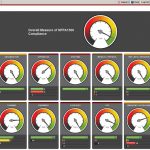A Better Way To Gauge Safety: Measure NFPA 1500 Requirements [Part 1]
As a result of our groundbreaking partnership with the University of Texas Arlington, Emergency Reporting is pleased to announce an industry first: a web-based tool to help you manage the health and safety of your most important resource, your staff, through a tool that helps you measure NFPA 1500 requirements and compliance within your department.
This tool, Safety Analytics, provides a real-time look at the state of your department’s overall safety and compliance with NFPA 1500 the standard for Fire Department Occupational Safety and Health. NFPA 1500 is an umbrella document that encompasses just about every possible aspect of a fire department’s health and safety. Chiefs and Health & Safety Officers worldwide know that complying with NFPA 1500 is a daunting, manpower-intensive, and expensive proposition.
Military and civilian fire service professionals with hundreds of hours of combined experience helped guide this tool from its inception to release in order to help you accurately measure NFPA 1500 requirements within your department. Currently, there are three versions of Safety Analytics: Basic, Plus & Premier. Each was designed with our unique Pump Panel interface. The Pump Panel features 10 gauges that represent different safety standards as well as a Master Compound Gauge that shows your department’s total measure of NFPA 1500 requirements.
In this blog series, we will detail how each gauge operates and how Safety Analytics helps your department achieve NFPA 1500 compliance.
Gauge 1 – Organization
Does my department have all the NFPA 1500-required documentation?
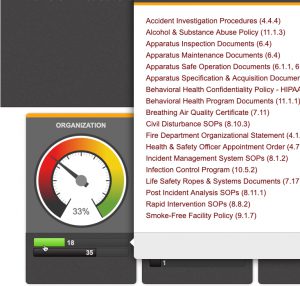
Examples of requisite documentation include: Fire Department Organizational Statement (NFPA 1500 4.1.1), Risk Management Plan (4.2.1), and a Safety & Health Policy (4.3.1). Pre-configured Library categories and subcategories specific to NFPA 1500 are used to securely store these essential documents and feed this gauge.
Gauge 2 Apparatus
Is my department’s apparatus being inspected (truck-check) on a routine basis? Which apparatus are out of service?
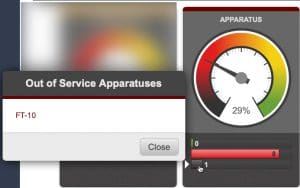
Again, thanks to improvements in the Maintenance module, you can keep track of your agency’s apparatus better than ever before. Added fields include In Service status, NFPA Compliance Required, and the ability to select Inspection Frequency.
Within the Maintenance Module is Emergency Reporting’s Rig Checks feature, a powerful fleet management tool that meets every department’s needs. ER Rig Checks performs on an easy-to-use interface with a new intuitive design. It features the ability to search apparatus by name, station ID, or vehicle number, as well as filter your apparatus by name, in-service/out-of-service status, incomplete checks, and rigs assigned to your station.
To learn more about Emergency Reporting Rig Checks check out this short tutorial. If you have further questions, please email [email protected].
Gauge 3 Staffing
Does my department have adequate staffing?

The Staffing Gauge lets you see your department’s overall of number active personnel compared to what your agency has established as an organizational staffing baseline in the Demographics Module. In other words, this gauge lets you know if your agency staffing meets your organization’s minimum requirements. It’s important to know this gauge is not designed to measure daily shift staffing but to give leaders of the organization an overall look at staffing.
Gauge 4 Medical / Physical
Are my personnel fit for duty? Who is on light-duty? Who is not fit for duty?
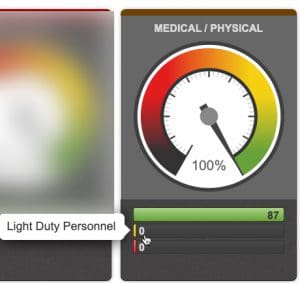
This gauge peers into the Administration Module to determine the number of personnel that are fully combat-ready, on light-duty, or not fit for duty due to medical or other reasons. (NFPA 1500, Chap. 10). This gauge looks only at active personnel.
Gauge 5 – Wellness / Behavior
Does my department have a Wellness / Behavior Program? Are all personnel informed about the Wellness / Behavior program?
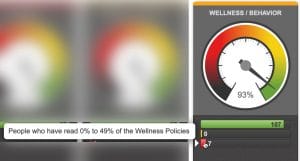
This gauge looks into the Library Module and serves as verification that your agency has a wellness/behavior program. It also indicates that personnel have read your agency’s wellness/behavior program documents.
View Blog Post[/mk_button]
Continue to “A better Way to Gauge Safety: Measure NFPA 1500 Requirements (Part 2)” for a description of the next five gauges.
If you would like to learn more about how Emergency Reporting can help you with your NFPA 1500 program you can view our Safety Analytics video on our YouTube channel or check out our Safety Analytics Module on our website.

![A Better Way To Gauge Safety: Measure NFPA 1500 Requirements [Part 1] A Better Way To Gauge Safety: Measure NFPA 1500 Requirements [Part 1]](https://emergencyreporting.ca/wp-content/uploads/bfi_thumb/dummy-transparent-qkgucjfwr4ao6y4zwkd6644cg1d3z4ddwjys3yn85k.png)


